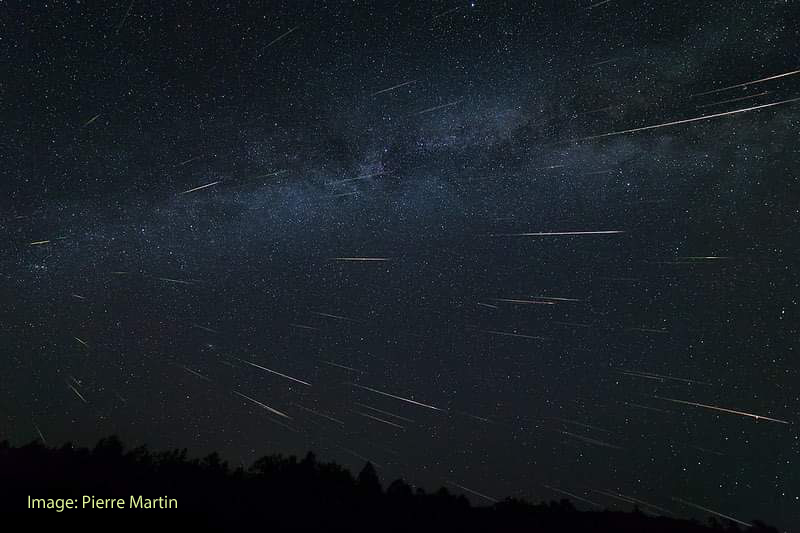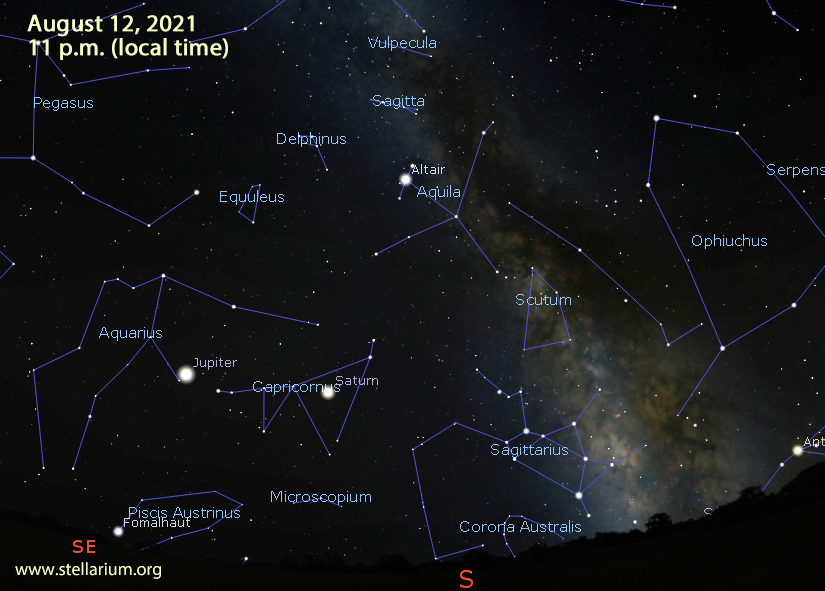Gas Giants and The Perseids
One of the best meteor showers is now underway. The Perseids runs from July 17 to August 24. According to Ottawa Centre’s Pierre Martin, “the peak of the Perseids producing about 90 meteors per hour will occur late afternoon on the 12th. Therefore the nights of Aug 11/12, as well as the 12/13, should reward you with 50 to 60 or more meteors per hour striking the atmosphere at 59 km/sec”. Pierre also says “a higher number of bright fireballs may be seen on nights before the peak rather than nights after”. Moonlight will not be a factor this year with the new moon on August 8. By contrast, next year’s Perseids takes place under a full moon, drastically reducing the hourly rate. This year's full Sturgeon Moon takes place on August 22.
The parent comet is named 109P/Swift-Tuttle, a 26 km wide mountain of ice, dust and gravel that last visited the inner solar system in 1992 in its 133-year orbit around the sun. It will return in the year 2125, replenishing a fresh path of comet debris ejected from the comet’s surface. In 1865 the Italian astronomer Giovanni Schiaparelli discovered it was this comet’s debris that was responsible for the Perseids.

When a comet enters our inner solar system solar radiation interacts with the comet, causing volatile material to vaporize and creates the comet’s coma or cometary fog measuring close to 100,000 kilometres wide around the smaller nucleus. A dust tail sometimes forms if debris is blown off the comet’s surface much like confetti blowing off the back of a truck on the highway. Not all comets have pronounced dust tails. As Swift-Tuttle retreated from the sun’s warming effects and back to the outer solar system, it faded away becoming a dark mountain once again only to be awakened by the sun upon its next return.
If you have the chance to observe from dark skies absent of any stray lights, enjoy the band of our Milky Way Galaxy as this collective glow of billions of distant stars stretches from Sagittarius in the south to Cassiopeia in the northeast. Adding to the celestial landscape the bright gas giants are at opposition this month with Saturn on the 2nd and Jupiter on the 20th. The two are now separated by 12 inches of sky at arm’s length, a far cry from their close conjunction we saw last December. During opposition, planets are closest to the earth and best for viewing and imaging surface detail. They rise at sunset and set at sunrise. Bright Jupiter and (to its right) dimmer Saturn are unmistakable as they appear to the left of the “teapot” of Sagittarius.

Meteors or “shooting stars” are seen on a nightly basis. They can be anything from interstellar dust and larger bodies measuring metres long that reside in the solar system, to space junk entering the atmosphere. Meteor showers are a result of Earth plowing through a comet’s debris field in its yearly orbit around the sun, much like crossing the finish line of a race. This is why the Perseids and other known meteor showers occur at the same time each year. The name of a particular shower indicates the constellation the meteors appear to be coming from which is called the “radiant”.
So gather a few friends and/or family members, set up chairs, bring snacks, and take advantage of warm moonless conditions to view this epic display. Look up at the stars, listen to the crickets and frogs, and let nature bring a sense of calm over you.
Until next month, clear skies everyone.
Gary Boyle
